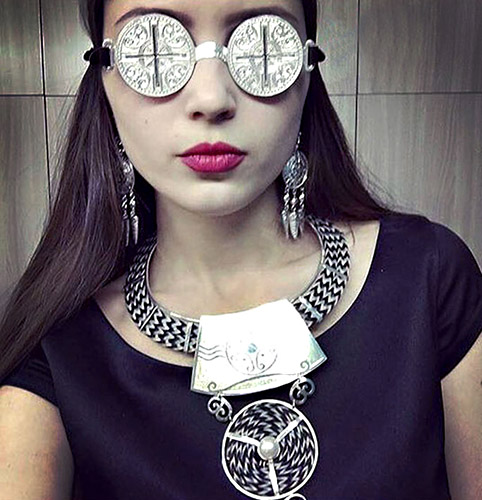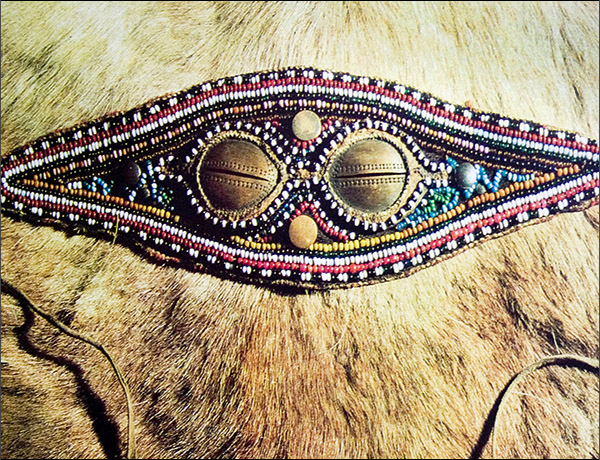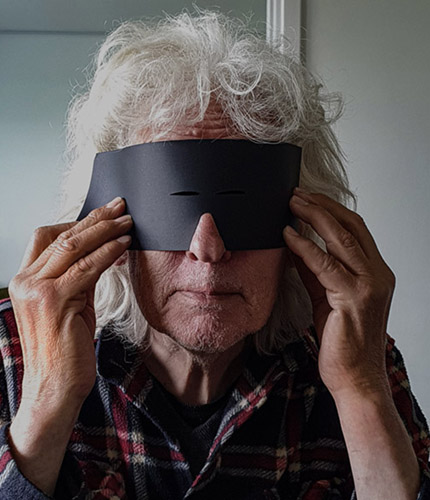As you can see, I had to try if it works, which you can do for yourself of course.
How does it work?
Through the little hole (slit) only a small portion of the light reaches the eye. The largest part of the light from the lightbulb is stopped by the black paper. The sunglasses which the Inuit (Eskimos) from the North Pole invented to protect themselves from the blinding light, work in the same manner, they cut eyemasks with two tiny slits, out of bone or wood.
Snow goggles are found in burials around Siberia; some of them were made of horse hair, the others of birch bark. Pictures: YakutCostume, The Siberian Times
Northern latitudes of the US and Canada also have a tradition for mankind such eyewear.
While there was an obvious practical use for the goggles, a variant of these ‘spectacles’ xxxx is believed to have been used by traditional shamans; for example a pair of goggles without holes of slips was found at Ekve.
The Event and Dolgans people turned to metal in making the eyewear with copper or tin or silver goggles inserted into a half-mask made of reindeer skin or other pelt, or, later, cloth obtained from Russian incomers. Decorations with beads was also a feature.
The same type of goggles was also used by other Arctic people such as the Nganasan or Khanty. The British Museum even has some examples.
The tradition continues to this day and is thriving in Yakutia - also known as Sakha Republic, the largest region in the Russian Federation.
Going back in time, the Yakut people used a wide range of materials to make goggles - metal, birch bark, wood, bone, skin, and horsehair.
link: www.filson.com



